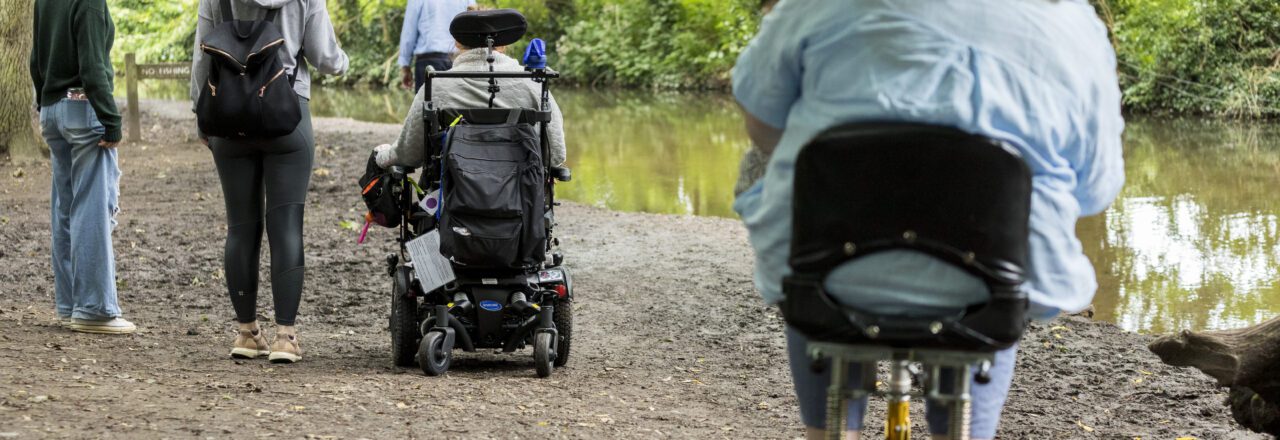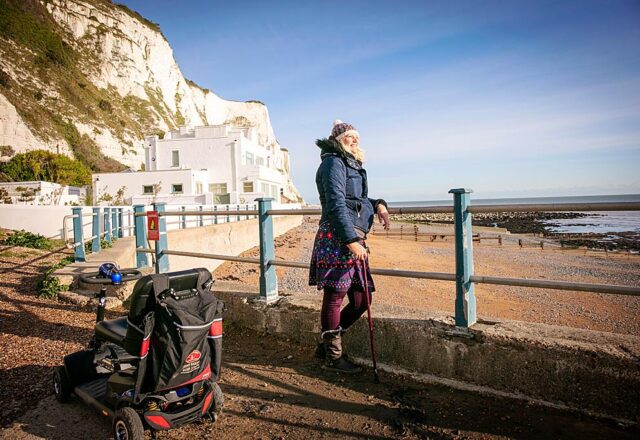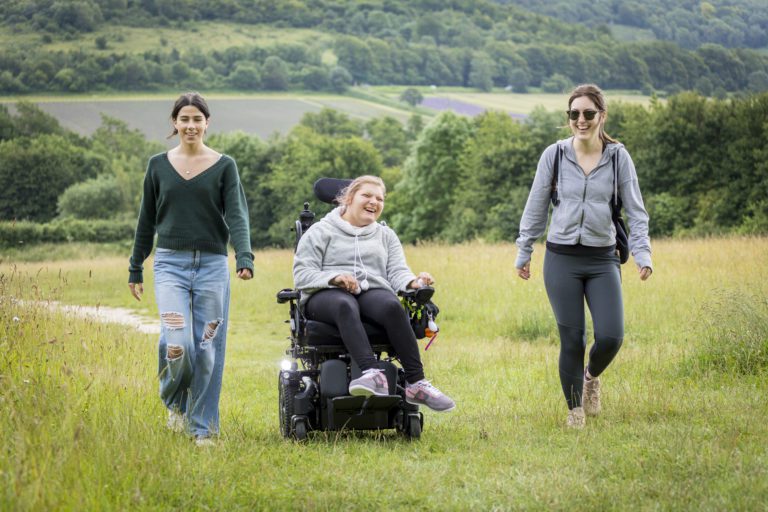The Kent Downs AONB unit is helping Defra to design new schemes that reward environmental benefits. These three Tests and Trials covering Viticulture, Accessibility, and Natural Flood Management have been co-designed with farmers, land managers, landowners and other interested parties. They will help shape the way payments are made to farmers and landowners from 2024 onwards.
The Enhancing Access Opportunities Test and Trial reported to Defra in March 2021, this exciting work has contributed to proposals that we believe provide an opportunity to make a real difference to how people access the countryside and greenspaces for the next generation. Its aim was to answer three key research questions that will deliver public access, health and wellbeing and environmental education where it is most needed.
1. How should landowners be compensated for providing additional access on their land?
2. How can we protect the most sensitive areas from too much access?
3. How can we ensure that under-represented groups can access greenspaces?
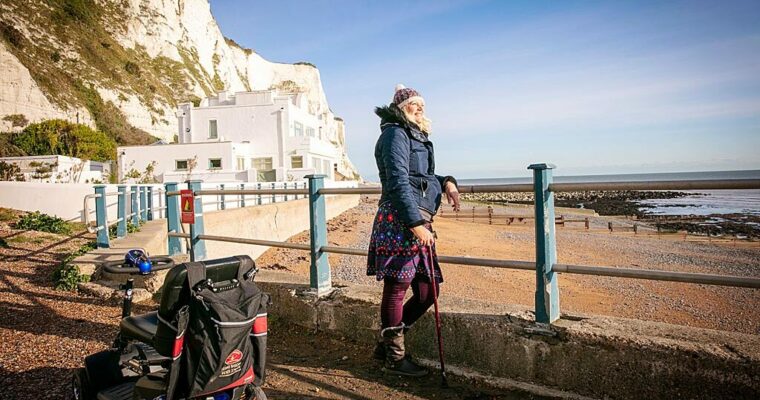
A once in a generation opportunity
Enhancing access to the environment is an important ‘public good’ that the Government seeks to secure through Environmental Land Management, indeed access could be the element of the schemes which offers the greatest benefit to public health and well-being if we get the investments right.
While all parts of society should benefit from enhanced access, there is a long-standing recognition that there are inequalities in those who do benefit and many, sometimes substantial, barriers remain to greater inclusion in access to the countryside. Barriers exist both before communities and individuals wishing to access and engage more with the environment and before farmers and land managers who might offer more access and engagement. This Test and Trial sought to understand these barriers and provide evidence to recommend effective and practical ways to overcome them.

Public access to the countryside can be an emotive issue; the Covid-19 pandemic has highlighted this more than any event in our recent history with numbers of people visiting the countryside reaching record levels and, at the same time, barriers to access being impossible to overcome for others. The evidence is clear that carefully considered, targeted, good quality, inclusive public access to the countryside is needed now more than ever.
Although this Test and Trial was initiated a year before the Covid pandemic struck the events of this momentous year have properly and inevitably shaped the research questions, the responses that we have received and our findings.
The results are positive. The ways we might enhance access and overcome the barriers to enjoying access and engagement are often broadly the same as the ways to overcome the barriers to providing new access opportunities. Improving access and engagement can be good for everyone.
Environmental Land Management provides a once in a generation opportunity to enhance public access to the environment in a way that provides substantial benefits to more diverse people as well as for farmers and land managers.
10 Key Findings
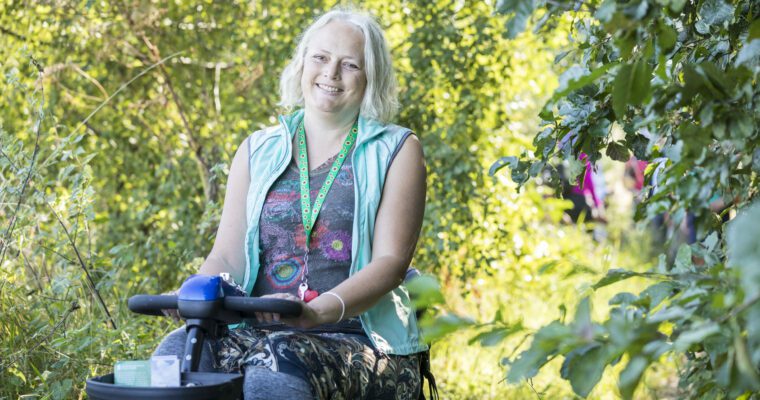
1. There is an appetite for providing permissive and enhanced access amongst farmers and land managers but the intervention rates need to be at a level that provides an incentive to do so.
2. Improving access can be good for everyone – farmers and land managers might benefit at least equally to those enjoying the access, this might be through new payments, diversification opportunities, overcoming problematic access and overcoming social exclusion are examples.
3. There are barriers to access for some people including physical, economic, societal and perceptual barriers. Some of the barriers to greater diversity and inclusion are built into language, systems and governance; they are institutional and this should be recognised in order to effect change.
4. Investment in enhancing access should not only be for areas of land or length of path but for the intensity of benefit to the recipients, for instance small areas of land can provide transformational benefit for very troubled or traumatised people. In other areas simple changes (like short connections between public rights of way) can have a high level of benefit for low investment.
5. Facilitators and community champions can work directly with those communities that access the countryside least to help address access inequalities. They can help ensure that educational access paid for through schemes reaches those that need it most and support farmers and land managers to provide well thought through welcoming access and engagement arrangements.
6. Investments should be long-term; it can be more damaging to have short run potentially token projects that achieve some benefit then drop away; this is as true for farmers and land managers as it is for those experiencing access inequality.
7. Educational access can achieve considerably more than it does under Countryside Stewardship but the focus should be on engaging with people and communities that have limited experiences of the countryside.
8. Providing new access should not be mandatory for farmers and land managers – it should be taken up where it makes sense to do so and farmers and land managers are willing to engage. Advisors and convenors should encourage farmers and land managers to become involved in target areas where it will have the greatest impact if schemes are to provide value for money.
9. Land management plans should include access plans and identify opportunities to divert access away from ecologically or otherwise sensitive sites. This could be either by providing alternative routes or improving the quality of surfacing to encourage use in less sensitive routes.
10. The concerns that farmers and landowners have about anti-social behaviour and that permissive access may lead to claims of rights of access must be addressed explicitly in order to give confidence in providing additional or enhanced access.
Research Methodology
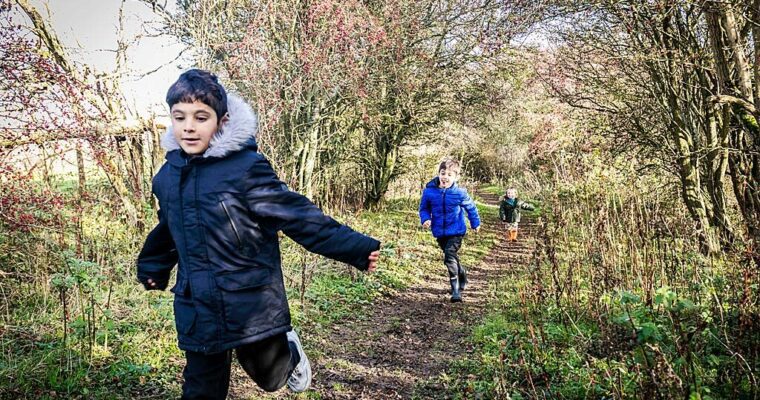
At the heart of the Tests and trials is the need to co-develop the reports and recommendations that are produced with farmers, land managers, landowners and access experts. We did the following:
• 5 workshops have been held with farmers, landowners and land managers to gather views and opinions.
• 4 workshops have been held with access professionals and inclusivity groups.
• 26 case studies have been created, based on in depth interviews with farmers, estates, inclusivity groups and other landowners. These include costed examples.
• A report on the legal and insurance liabilities incurred by those providing permissive access has been created.
• A literature and evidence review has been created examining the barriers to access faced by different groups.
• A set of proposed actions have been created and indicative costings have been calculated.
• A final report has been written and submitted.
Report & Appendices
Enhancing Access Opportunities Test and Trial Final Report
This Final Report and Appendices have been submitted to Defra.
Enhancing Access Opportunities Test and Trial Final Report (PDF, 6 MB)
Note that Appendices I, II & III contain personal information and are not available for publication
Appendix VII – Enhancing Access Opportunities Test and Trial Questionnaire Report (PDF, 1 MB)
Appendix XII – Enhancing Access Opportunities Test and Trial Case Studies – compressed (PDF, 6 MB)
Appendix XIII – Enhancing Access Opportunities Test and Trial Example Holdings (PDF, 3 MB)


